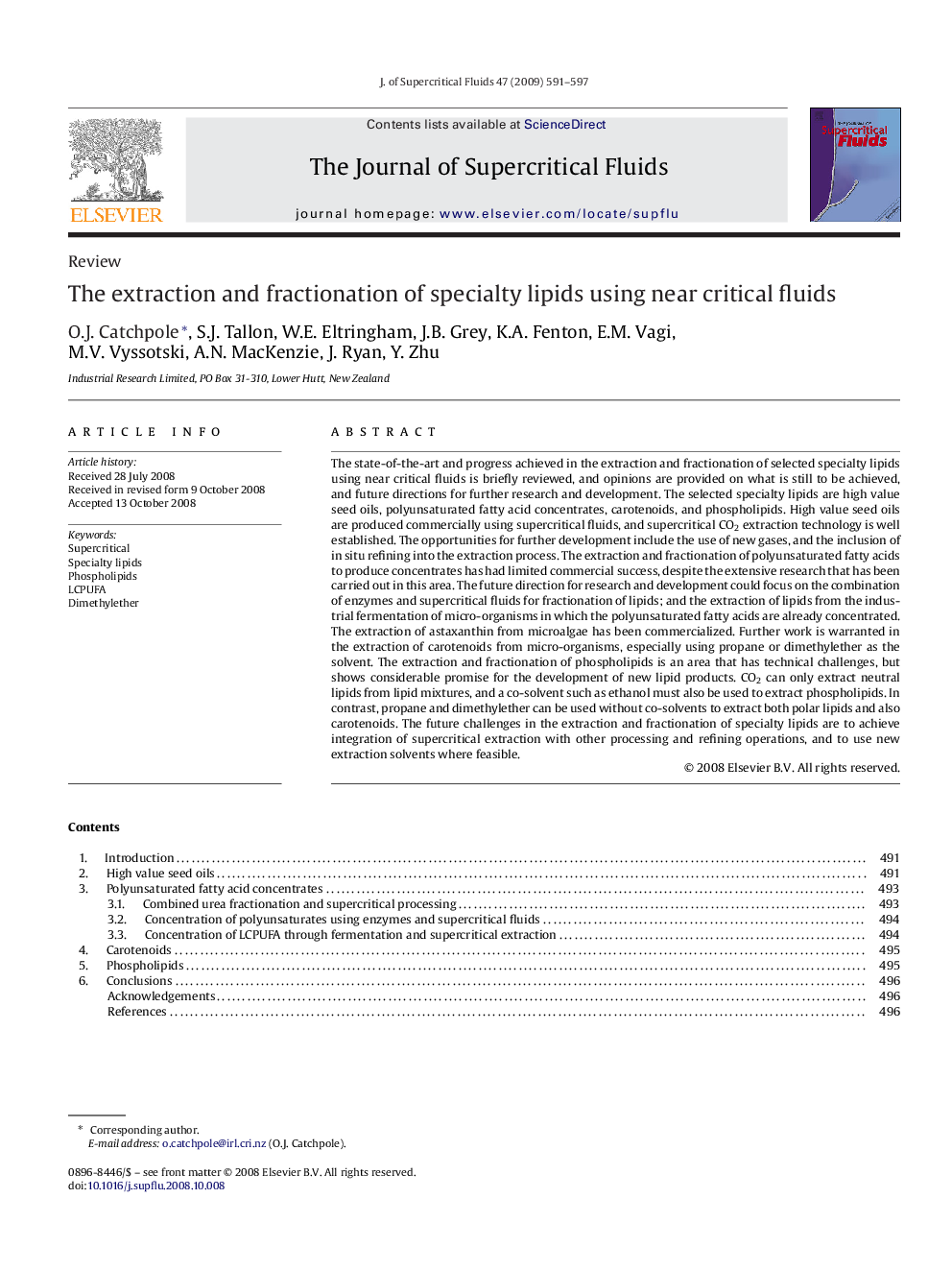| Article ID | Journal | Published Year | Pages | File Type |
|---|---|---|---|---|
| 231720 | The Journal of Supercritical Fluids | 2009 | 7 Pages |
The state-of-the-art and progress achieved in the extraction and fractionation of selected specialty lipids using near critical fluids is briefly reviewed, and opinions are provided on what is still to be achieved, and future directions for further research and development. The selected specialty lipids are high value seed oils, polyunsaturated fatty acid concentrates, carotenoids, and phospholipids. High value seed oils are produced commercially using supercritical fluids, and supercritical CO2 extraction technology is well established. The opportunities for further development include the use of new gases, and the inclusion of in situ refining into the extraction process. The extraction and fractionation of polyunsaturated fatty acids to produce concentrates has had limited commercial success, despite the extensive research that has been carried out in this area. The future direction for research and development could focus on the combination of enzymes and supercritical fluids for fractionation of lipids; and the extraction of lipids from the industrial fermentation of micro-organisms in which the polyunsaturated fatty acids are already concentrated. The extraction of astaxanthin from microalgae has been commercialized. Further work is warranted in the extraction of carotenoids from micro-organisms, especially using propane or dimethylether as the solvent. The extraction and fractionation of phospholipids is an area that has technical challenges, but shows considerable promise for the development of new lipid products. CO2 can only extract neutral lipids from lipid mixtures, and a co-solvent such as ethanol must also be used to extract phospholipids. In contrast, propane and dimethylether can be used without co-solvents to extract both polar lipids and also carotenoids. The future challenges in the extraction and fractionation of specialty lipids are to achieve integration of supercritical extraction with other processing and refining operations, and to use new extraction solvents where feasible.
Graphical abstractThe processing of high value seed oils, LCPUFA, carotenoids, and phospholipids is briefly reviewed. The opportunities for further development in the extraction of high value seed oils include the use of new gases, and the inclusion of in situ refining into the extraction process. Processing of LCPUFA using enzymes in supercritical fluids; or extraction of lipids from fermented LCPUFA-rich micro-organisms shows promise. The extraction and fractionation of phospholipids is technically challenging, but holds considerable promise for new lipid products. Propane and dimethylether can be used without co-solvents to extract phospholipids and/or carotenoids.Figure optionsDownload full-size imageDownload as PowerPoint slide
